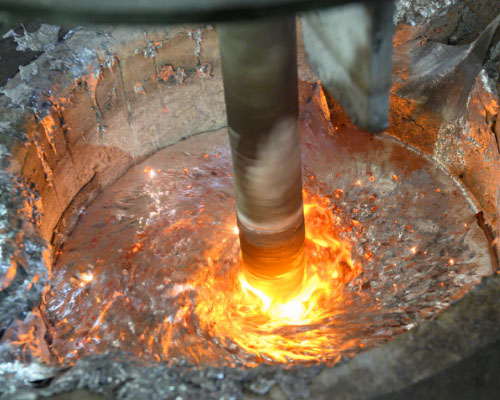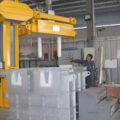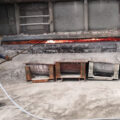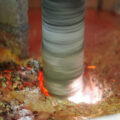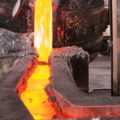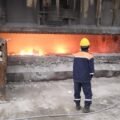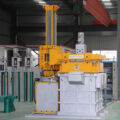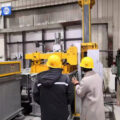Aluminium alloy refining process by rotating degassing system can remove hydrogen and slag, purify the aluminum, and eliminate the pinholes. With the rapid development of the automotive industry, the output of aluminum alloy castings is growing rapidly. A large number of casting waste products caused by improper treatment of aluminum alloy melts is a problem, the aluminum alloy casting manufacturers urgently need to solve. In recent years, the research of aluminium alloy refining process has attracted the attention of casting workers. There are many factors that affect the quality of aluminum alloy melts, including aluminum alloy chemical composition, melting state, aluminum alloy refining, modification.
The pinhole defect of aluminum alloy castings is the most prominent cause of casting scrap. The presence of pinholes not only reduces the effective working area of the casting, but also provides a source of cracks, and accelerates the crack propagation process. It eventually leads to a decline in the mechanical properties of the material. The generation of pinholes mainly comes from the content of slag inclusion and hydrogen content in the melt. Hydrogen accounts for about 85% of the total gas in the aluminum melt. Because the solubility of hydrogen in solid aluminum is about 1/20 in the liquid state. When the aluminum solidifies, the hydrogen dissolved in it will precipitate out to form pinholes. The aluminium alloy refining process by rotating degassing system can remove hydrogen and slag, purify the aluminum liquid, and eliminate the pinholes of castings.
Aluminium Alloy Refining Process
The working principle is that when the motor drives the rotor to rotate, argon gas is broken into small bubbles. The presence of these small bubbles reduces the concentration of hydrogen in the aluminum liquid and the partial pressure on its surface, thereby reducing the concentration of hydrogen in the aluminum liquid. The hydrogen is taken out of the surface of the aluminum liquid by argon gas and burned and consumed in the liquid surface.
When small bubbles of argon gas move toward the liquid surface at the bottom of the aluminum liquid, the hydrogen dissolved in the aluminum liquid hits the argon-aluminum liquid phase interface, the hydrogen changes from the dissolved state to the adsorbed state. Gas atoms in the adsorption layer react to generate hydrogen molecules. As the bubbles grow, they rise to the surface of the molten aluminum and burn off.
When small bubbles of argon gas move from the bottom of the aluminum liquid to the liquid surface, the inclusion particles suspended in the aluminum liquid are agitated, and the inclusions collide with each other, gather and grow up. When the inclusion reaches a certain size, it may collide with the floating bubbles and be caught. It is then brought to the liquid surface to achieve the effect of removing slag.
There are two models of bubble trapping inclusions, which produce inertial collision capture for larger inclusions. For smaller inclusions, it is difficult to collide with bubbles, but tangential trapping may occur around the bubbles.
Because argon is an inert gas and the aluminum liquid does not react. It can replace hydrogen in the aluminum melt, which greatly reduces the hydrogen content in the aluminum melt and improves the mechanical properties of the aluminum alloy.


